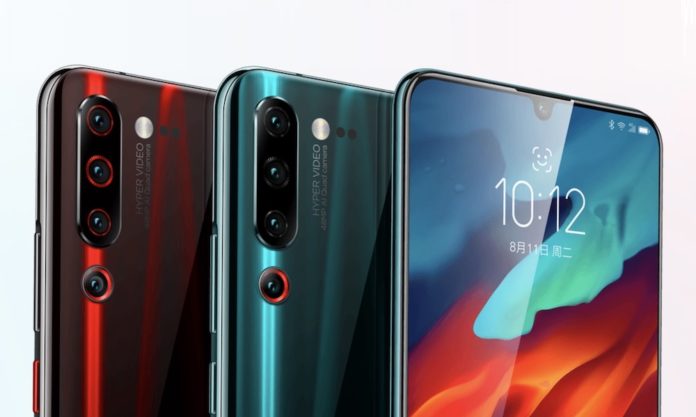019 is about to end and the year saw a lot of great innovations along with a few not-so-great innovations in the smartphone market. With no more launches lined up before the year ends, it’s a great time to evaluate how smartphones evolved during the year.
5G, Gigabit LTE, WiFi 6
2019 saw some welcomed changes in network capabilities of smartphones, most of which were even ahead of the operators that are supposed to deliver to the networks.
5G became a norm in flagship devices and we saw Gigabit LTE and WiFi 6 in some smartphones as well. Although none of these are fully built-out networks yet, smartphone manufacturers did their best to make their devices future-proof in the ever-evolving market.
The innovations in 5G, Gigabit LTE and WiFi in 2019 laid the groundwork for some revolutionary changes that will soon change the way we interact with our devices.
2019 also saw VoWiFi rolling out to more developing countries like India.
Display refresh rate
The refresh rate is a measure for the number of times a screen redraws an image. To put it simply, a higher refresh rate means lesser motion blur and considerably clearer image quality.
Most smartphones are equipped with 60Hz screens and until you use a smartphone display with 90Hz or higher refresh rate, you won’t really complain about it.
But the game changes when you do use a smartphone with 90Hz refresh rate. Displays with higher refresh rates enhance your experience as general tasks like scrolling through the app drawer, images and webpages become a lot smoother. These displays also cause lesser eye strain.
Displays became a lot about refresh rates in 2019 as soon as OnePlus launched the 7 Pro featuring 90Hz refresh rate display and as the year came towards the end, Xiaomi unveiled K30 with 120Hz refresh rate.
Fast charging
The smartphone manufacturers made huge strides in fast charging features in 2019. A few companies Realme and Oppo unveiled smartphones with 50W and 65W fast charging capabilities that can replenish the batteries in just 30 minutes.
Xiaomi went as far as 100W in a demo that claimed to charge a 4,000 mAh battery in mere 17 minutes, but sadly Xiaomi’s Super Charge Turbo is not available to customers just yet.
Apart from these brands, Oneplus also made great progress with 30T Warp Charge which can go 0-100 on OnePlus7T Pro in just about 1 hour. In a first, Apple also announced fast charging in the iPhone 11 series.
Camera or ‘Cameras’
“Number-of-cameras” jokes apart, smartphone manufacturers made great progress in the camera department of smartphones and they are now closer than ever to DSLRs.
Smartphones of 2019 saw important innovations in terms of hardware, some of them featuring as much as five individual cameras (for example, the Nokia 9 PureView and the Xiaomi Mi 9 CC Pro Premium Edition), as well as new and improved computational methods on the software side of things.
48 Megapixels and even 64 Megapixel camera sensors became reality and along with dedicated night mode and ultra-wide cameras, manufacturers successfully revolutionized smartphone photography. In 2020, 108 MP cameras are expected to take the game even further.
Motion Gestures
Although only Samsung and Google are leading for now when it comes to motion gestures to control smartphones, the feature can change the way we interact with our phones.
Google launched its Pixel 4 with a Soli radar that can detect movement and help you access your smartphone without actually touching it.
Samsung also unveiled Galaxy Note 10 with Air Actions accessible through S-Pen. Users can use their S-Pen as a sort of wand and use it to scroll and do other things one can do with a swipe.
Instead of touching smartphone screens with greasy fingers, you can wave your hand or pinch your fingers in the air to make stuff happen on the phone.
There’s still a lot of scope for improvement when it comes to motion gestures and the innovations made in 2019 have laid the groundwork for future innovations.
In-display fingerprint sensors
Although in-display fingerprint sensors made their debut in 2018, they really became mainstream in 2019. Manufacturers made great progress in terms of in-display fingerprint sensors and they have now become more reliable than ever.
Smartphone makers were also successful in delivering mid-range smartphones with in-display fingerprint sensors.
Bezel-less displays also became a mainstream thing in 2019 with the help of these in-display fingerprint sensors and pop-up cameras.
Apart from bezel-less displays, hole-punch displays also made a debut in 2019 with Samsung Galaxy S10 and were welcomed by users. Few other companies have already announced smartphones with such displays to keep up with user demand.
Gaming smartphones
Gaming smartphones have been a category for quite some time but they really picked up with the success of games like PUBG Mobile, Fortnite and Garena Free Fire. Both MediaTek and Qualcomm launched chipsets optimized specifically for gaming and displays with 90Hz and 120Hz refresh rates just added the cherry on top.
Overall 2019 was great for smartphone innovations and essentially laid groundwork for some revolutionary innovations that will soon change the way we interact with our smartphones.
An honorary mention left out of the list is foldable phones that made a debut in 2019, although with controversies. These are left out due to the fact that they are not yet being produced for the masses but it is expected to change in 2020. Other innovations like all-screen phones were also teased in 2019 but are again not produced for the masses yet




















































